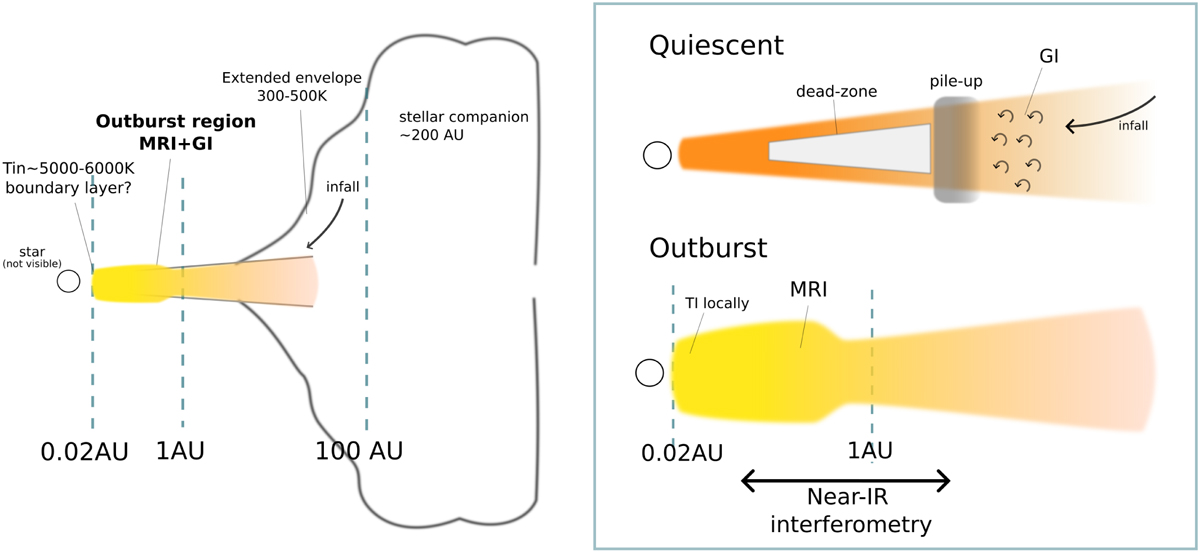Fig. 3

Download original image
Observational results. Left: structure of FU Orionis as seen with the components of our NIR dataset. The outbursting region corresponds to the marginally resolved disk in the interferometric data. Right: (adapted from Armitage 2011): scenario of a FU Orionis outburst in the MRI-GI model. In the quiescent phase, the disk has a magnetically layered structure: material piles up at the outer edge of the dead zone due to GI. As it reaches a sufficient density and temperature to activate MRI, the full disk goes into outburst, which corresponds to the region seen in the NIR interferometric data. Locally, TI can be triggered very close to the star (<O.1 AU).
Current usage metrics show cumulative count of Article Views (full-text article views including HTML views, PDF and ePub downloads, according to the available data) and Abstracts Views on Vision4Press platform.
Data correspond to usage on the plateform after 2015. The current usage metrics is available 48-96 hours after online publication and is updated daily on week days.
Initial download of the metrics may take a while.


